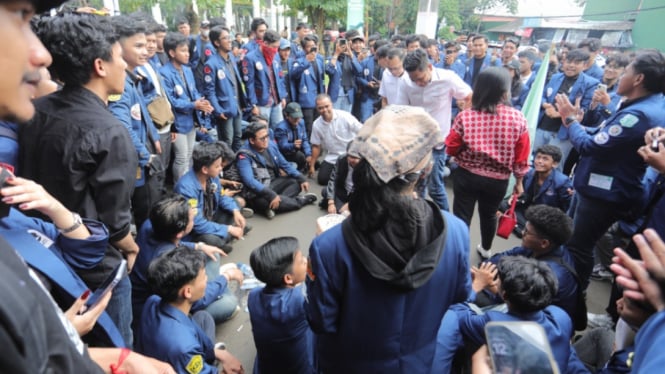Know the Philosophy Meaning of South Sulawesi Traditional Houses
- bramblefurniture
VIVA – Indonesia has a variety of cultural wealth, even Indonesian culture has a strong character in each of its ethnic groups. This cultural diversity in Indonesia includes many things, such as traditional clothes to traditional tribal houses found in Indonesian ethnic groups.
As one of the long-inhabited provinces, South Sulawesi has a rich culture. One of them is a traditional house. The traditional houses of some of these tribes signify the ancestral heritage that is still preserved today.
Uniquely, there are five types of traditional houses that have their philosophical meanings. Here's the explanation.
1. Bugis Traditional House
Rumah Adat Suku Bugis
- pixabay
The name of the Bugis traditional house can be distinguished based on the social status of its inhabitants, some of which are: Saoraja (Sallasa) means a big house, a house devoted to those who have royal blood or nobility, and Bola is a house that can be used by ordinary people.
The shape of the traditional house of the Bugis, South Sulawesi, is in the form of a stilt house with a floor that has a certain height from the ground. The shape and plan are the same, namely a rectangle.
The difference between the two types of traditional houses lies in the size of the building, the pillars, and the shape of the roof as a cover for the ridge, which is usually called "timpak laja" which has three to five levels according to its position in the social status of the community.
2. Luwuk Tribe Traditional House
Rumah Adat Suku Luwuk
- bramblefurniture
The Langkanae Traditional House is made of wood and consists of 88 pillars. When we enter the house, we can immediately see a very large room that can accommodate up to people. No wonder it is because this traditional house is the residence of the King of Luwu.
There is a distinctive feature of the traditional house of the Luwuk Tribe, namely the presence of prengreng flower ornaments as a symbol of the philosophy of life that spreads like tendrils. This ornament is usually found on the main stairs, window boards, and anjong (building cover).
Just like other South Sulawesi traditional houses, the status of the occupants of the house can be seen from the level in the house. Usually, Luwu traditional houses are built with 3-5 ridges that indicate the status of the building of the owner of the Luwuk traditional house.
3. Tongkongan Toraja Traditional House
Toraja Internasional Fesival 2018.
- U-Report
The Tongkonan Toraja Traditional House is unique in that its roof is similar to the Minang Traditional House, namely Rumah Gadang with a slight difference in the number of gonjongs on the roof. Tongkonan roof has beauty with a line of horns resembling a buffalo.
There are three types of Tongkonan known to the public, namely: Tongkonan layuk, the place of supreme power, when everything related to government happens. The Pekanbaru Tongkonan (pekaindoran), owned by a family member who has a high position in adat, and the Batu Tongkonan, this building is used by ordinary Toraja residents.
4. Makassar Balla Traditional House
Rumah Adat Suku Makassar
- makassarguide
Balla Lompoa means a large house on stilts which is the residence for the King of Gowa. Looking from the architectural aspect of the building, Balla Lompoa is in the form of a stilt house with three parts of the house, namely the ceiling, the body of the house, and also the bottom.
The roof of the house, in the form of a prism and wearing a multilevel ridge cover. The number of levels on this ridge roof indicates the social level of the occupants of the house. For example, a Raja's house consists of five ridge levels while a community house is usually only separated from one or two levels.
5. Mandar Traditional House
Rumah Adat Suku Mandar
- makassarguide
The traditional house of the Mandar tribe, South Sulawesi, is named Boyang. The Mandar tribal house has several parts including the lower part, and the center of house.
The lower part of the house is called rambang or shading boyang. Rambang with ground floor has a fence made of bamboo slats. This part of the house is usually used as a place to raise chickens, cows, or goats. Meanwhile, naung boyang has fewer functions than rambang, for example, storing used goods.
The center of the house or samboyang, is a place of activity for homeowners. Samboyang is generally divided into two, namely paceko which is generally only one plot, and samboyang consisting of two plots.



































